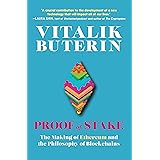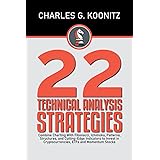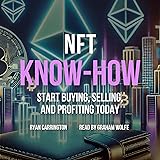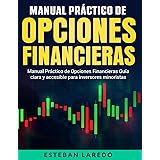Cryptocurrency mining profitability in 2025 presents a dynamic and often challenging landscape, far from a simple ‘yes’ or ‘no’ answer. As detailed by Drew Vosk in the accompanying video, the reality for an operator running over 100 mining rigs across 20-something different cryptocurrencies is that profitability is a strategic balance, a game of ‘sometimes.’ Understanding the nuances of hardware efficiency, electricity rates, and market cycles is paramount for anyone serious about a mining endeavor today.
The Nuance of Crypto Mining Profitability in 2025
The journey through various altcoins highlights both successes and significant lessons. For instance, Kaspa (KAS) mining, once a highly lucrative venture, has seen a dramatic shift. Most Kaspa miners, with the notable exception of the KS2 Light, have been shut down due to burning more in electricity than they earn. This illustrates the rapid change in altcoin mining profitability; what is green today can quickly turn red tomorrow, necessitating constant monitoring and decisive action.
A contrasting example is Nervos Network (CKB). Vosk’s operation runs 15 K7 miners, 12 of which are in his mining farm, pulling in approximately $105 a day, or about 17,500 CKB. This equipment, operating on the Eaglesong algorithm with an original announce date of November 2022, was at one point losing money—as low as a dollar a day at a 7.5 cents per kilowatt-hour electricity rate. However, a significant 30% price pump in the last seven days revived profitability, turning a daily loss into a gain of $2-3. This demonstrates the profound impact of coin price volatility on mining returns and the potential for a long-term holding strategy to offset short-term operational losses.
Strategic Bitcoin Mining: Powering Through Difficulty
Bitcoin mining remains the cornerstone of many large-scale operations, despite it being “more difficult than ever.” With Bitcoin trading over $100,000 per coin and commanding a market cap exceeding $2 trillion, the competition is fierce. The daily emission is less than $50 million, distributed among a global network of miners. This environment pushes miners towards the most efficient hardware and innovative power solutions.
Major mining farms are increasingly evaluating hydro miner deployments due to their superior efficiency. However, these often require three-phase power, a significant infrastructure investment. Vosk, lacking three-phase power, opted to spend $50,000 to upgrade his single-phase setup, rather than an estimated $120,000 for a three-phase connection. This investment, combined with acquiring efficient machines, is critical for lowering the watts or joules per terahash, directly impacting the bottom line. It’s a pragmatic decision that prioritizes immediate, actionable improvements over ideal but cost-prohibitive solutions.
Next-Gen Bitcoin ASICs: S21XPs and SealMiner A2
The acquisition of nearly $50,000 worth of S21XPs, specifically before a recent Bitcoin price pump, highlights strategic purchasing. These units were bought at approximately $6,000 each and quickly rose to nearly $7,000. Such rapid appreciation in hardware value, coupled with improved mining performance, underscores the importance of timing and foresight in equipment investment. The Bitdeer SealMiner A2 Pro also emerges as an interesting contender, with impressive efficiency and a potentially lower price point than Bitmain’s offerings. At nearly $3,000 per machine for 226 terahash per second, it offers a strong bang for the buck, driving price pressure on industry giants like Bitmain.
Optimizing Existing Fleets: Underclocking for Efficiency
With 41 Bitcoin miners online, contributing 6.7 petahash to his operation (with ambitions for 10 petahash), Vosk emphasizes running all gear through the market cycle. This includes older S19 series miners, many of which are underclocked. Underclocking these machines achieves a 10-20% increase in efficiency, bringing them to 20 to 25 watts or joules per terahash. This meticulous optimization of power consumption relative to hash rate is vital for remaining profitable, especially when electricity costs are a primary concern. It’s a sophisticated strategy that extends the life and profitability of older hardware, ensuring that every watt of electricity is utilized effectively.
Investment Philosophy: Reinvesting and Hodling
A crucial aspect of Vosk’s strategy is continuous reinvestment and hodling. Despite pulling in nearly $400 a day in Bitcoin, with an estimated daily electricity bill of $200-300, actual cash profit hasn’t been taken since 2021. The focus is on expanding the farm and accumulating Bitcoin, betting on its long-term upside. This approach demands significant capital and risk tolerance, as it means forgoing immediate gains for potentially exponential future returns. It also highlights the “no pain, no gain” mentality prevalent in the industry, where sustained investment, even through stressful periods, is seen as necessary to “win.”
Diversification in Altcoin Mining: Finding Niche Opportunities
While Bitcoin takes center stage, diversification into select altcoins remains a key strategy for mitigating risk and capitalizing on specific market movements.
- Kadena’s Resurgence: Three KA3 miners, once generating a modest $2 a day, have seen a significant pump in Kadena’s price, now pulling in $3-6 daily. This highlights how holding the mined coin can dramatically increase overall returns when market conditions improve.
- Scrypt Mining (Litecoin & Dogecoin): Dogecoin, often dismissed, has proven incredibly lucrative. L7 ASIC miners, though older, remain highly profitable, earning $25-26 a day before electricity, covering about $6.43 daily in electric costs. The “triple mining” aspect (Litecoin, Dogecoin, and historically Bells) adds further value, though Bells currently contributes a negligible 5 cents a day. This segment is experiencing an “arms race” between Bitmain and Alphapax, with new, more efficient models continually emerging.
- Other Altcoins: Hits, Misses, and Hard Lessons: Many other miners, like the D9 (Dash), HS3 (Handshake), and various Sciacoin miners, show varied profitability. Some, like the HS3, have recently flipped back to green after long periods of unprofitability, while others, like Radiant mining with the Dragonball A11, are deemed “absolute trash,” representing significant losses ($6,000-$10,000). The AL1, an expensive Alpha miner, yields a mere $1.50 a day, underscoring the extreme risks of investing in hardware for smaller cap altcoins without careful foresight. Zcash moving away from mining makes Equihash hardware a scary proposition. These examples serve as stark reminders of the volatile nature of altcoin mining and the need for rigorous project evaluation.
Navigating the Hardware Landscape and Future Acquisitions
The efficiency of new hardware generation is monumental. Current Bitcoin miners offer nearly double the hash rate for similar power consumption compared to previous generations. The S21 XPs further push this, potentially tripling the hash rate for the same footprint as older models. This means replacing one old miner with one new one can drastically increase a farm’s output without substantially increasing power draw. This constant evolution fuels a desire for strategic hardware acquisitions.
Repair Challenges: A Costly Detour
Hardware issues can significantly impact profitability. Vosk recounts a frustrating experience with Bitmain’s Georgia repair facility, where a profitable X5 miner has been stuck for a year, costing him consistent daily income. This contrasts sharply with the Delaware facility’s efficiency. The takeaway is clear: efficient and reliable repair channels are as crucial as the hardware itself, as idle machines represent sunk costs and missed opportunities.
Evaluating New Hardware: Efficiency vs. Cost
Future acquisitions are geared towards hydro and immersion miners, even if just for testing. The Bitdeer SealMiner A2, with its impressive bang-for-buck, is putting pressure on Bitmain to lower prices on models like the S21 Plus. Canaan’s immersion models are also attractive, offering a balance of efficiency and a lower price point, even if slightly less efficient than top-tier Bitmain models. The market also sees “Helio miners” attracting significant investment, though Vosk expresses caution, viewing them as potential “paperweights” if their profitability is short-lived.
The Cycle of Obsolescence and Strategic Timing
The continuous innovation in ASIC technology means a constant cycle of equipment turnover. The L9 (Dogecoin/Litecoin) and S21 XP (Bitcoin) represent the pinnacle of current efficiency and capital investment. However, Vosk advises against buying into a “parabolic bull run,” recalling instances of miners buying S19s at $10,000 and selling them for $1,000 a year later, with the profit barely covering electricity. This long-term perspective emphasizes patience and strategic entry points for hardware acquisitions.
Long-Term Vision: Mitigating Risk and Maximizing Returns
For sustainable cryptocurrency mining profitability, a multi-faceted approach is essential. The immediate focus for Vosk is on reducing electricity costs, specifically through solar power, to make Bitcoin mining more viable long-term. This strategy aims to create a more resilient operation, less susceptible to market fluctuations and high operational expenses. The goal is not just to survive, but to thrive and “sleep soundly at night.”
Beyond Bitcoin, strategic diversification into select altcoins like Dogecoin provides crucial support and a balanced portfolio. However, this demands an up-to-date pulse on projects and independent thinking. It’s about avoiding becoming “a blind sheep led to slaughter” and instead making informed decisions based on personal research and calculated risk. This critical perspective on mining investments acknowledges that while it is indeed very profitable to mine, the upfront cost of entry for machines has never been higher, and the landscape is constantly evolving with new models and algorithms. Managing these complexities is key to unlocking enduring mining profitability.







